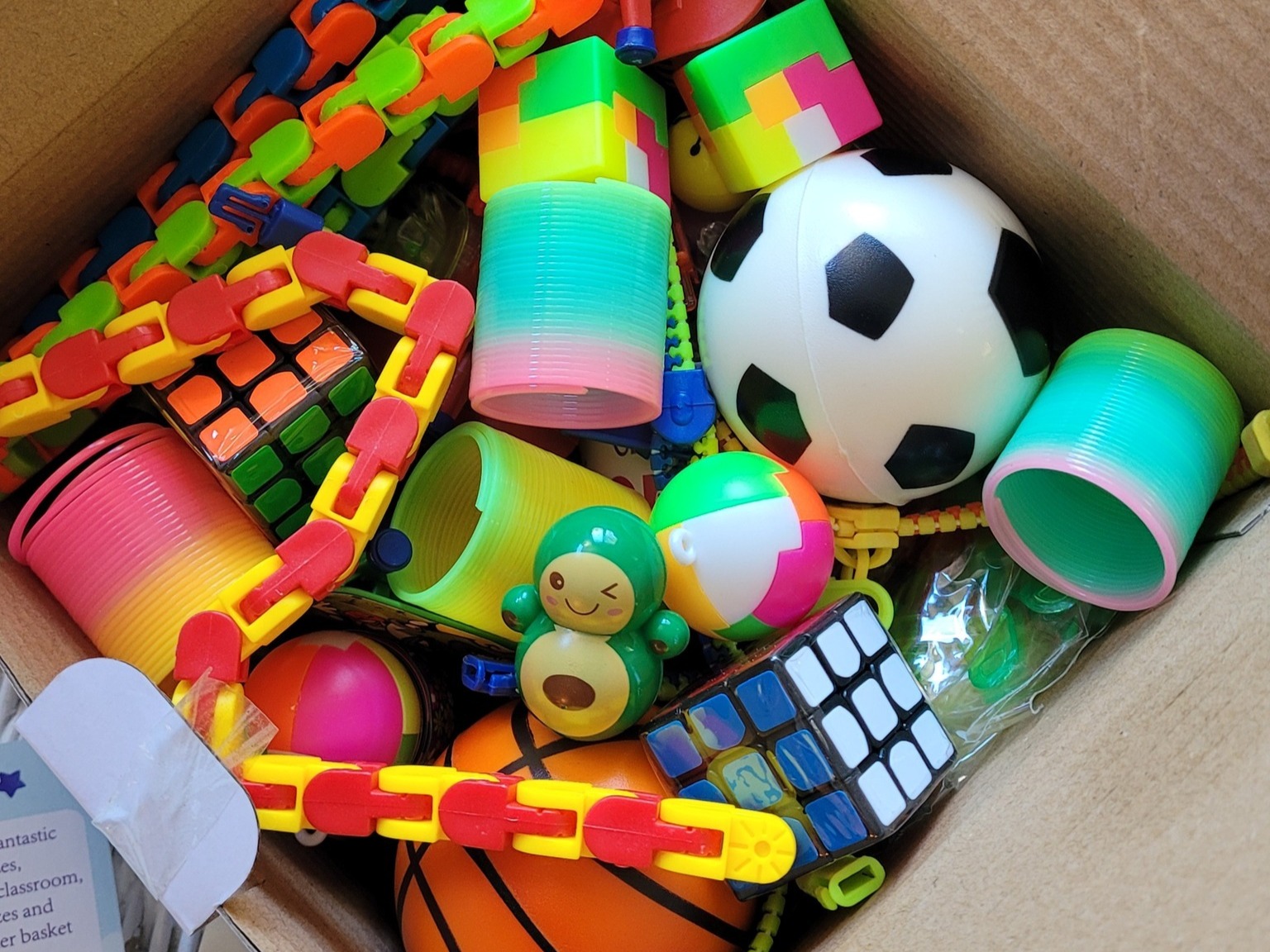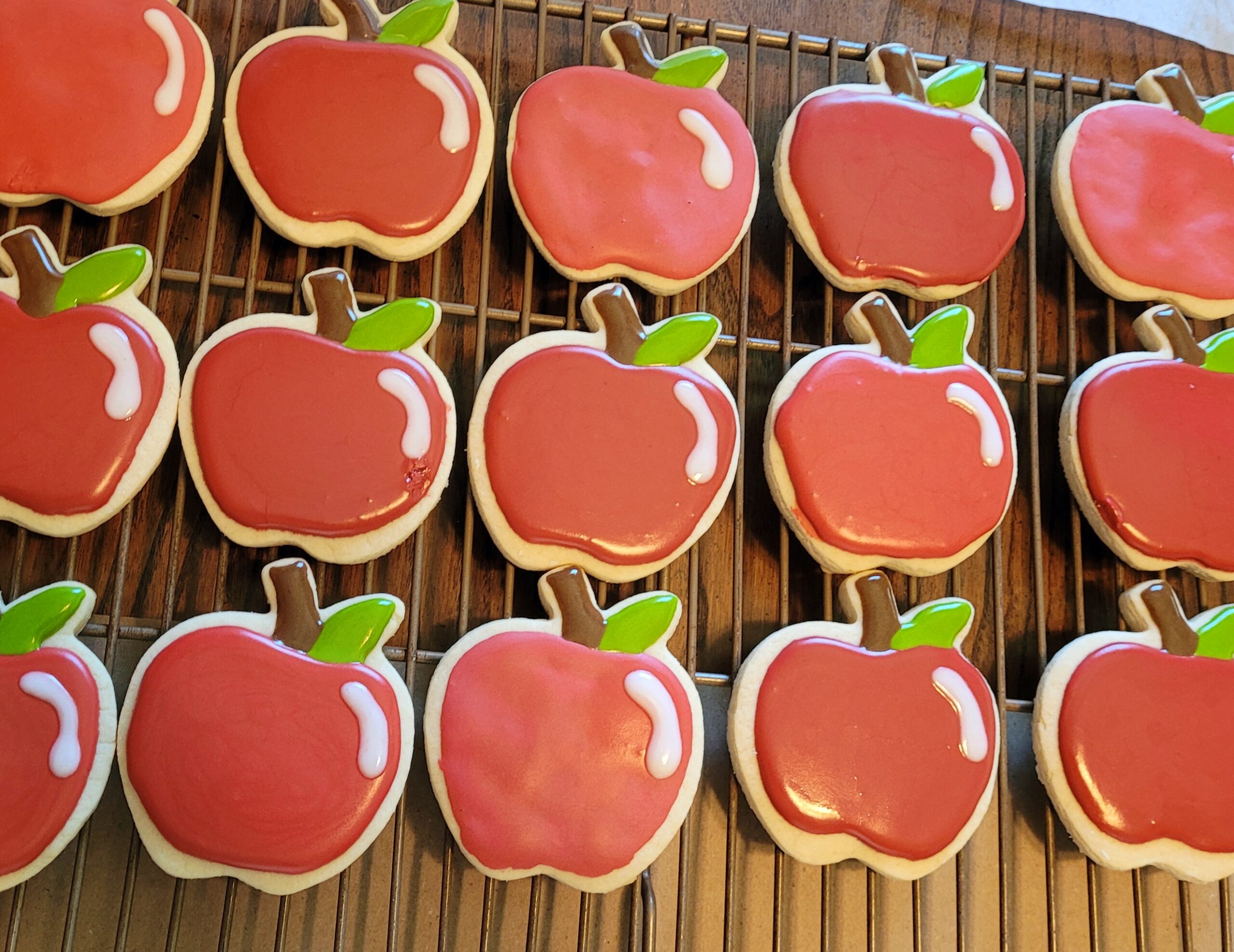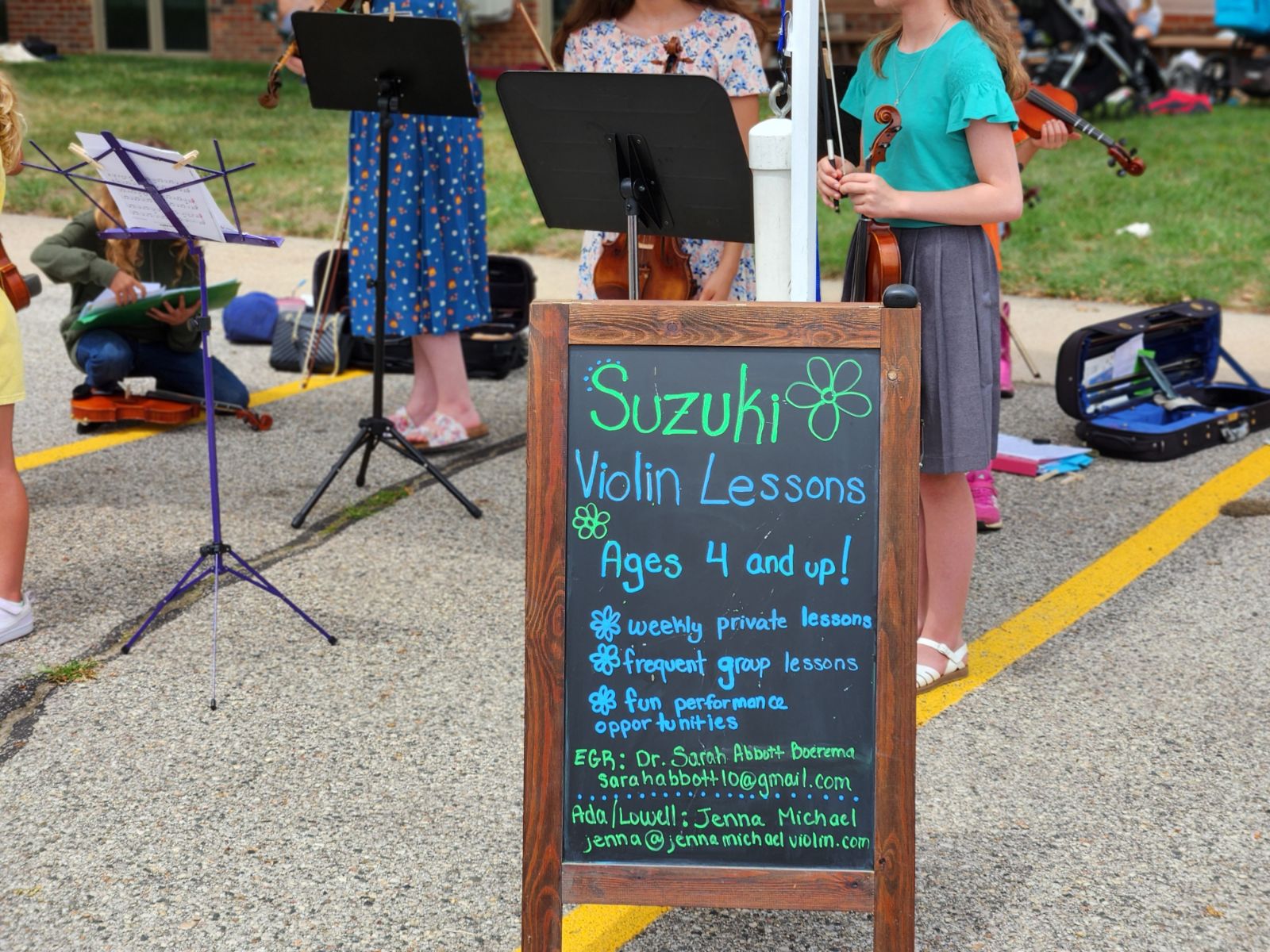Tag: Grand Rapids Violin Lessons
-
Spring 2025 Violin Recitals
My studio has been very busy! 32 of my students participated in one of two recitals on Saturday, May 10th. This was the first year I’ve tried having two different […] Read more
-
Practice Incentives for Violin Students

As a private studio teacher, you may have struggled with your personal philosophy behind practice incentives. We want to be careful to encourage intrinsic motivation in a student rather than […] Read more
-
Violin Studio Back to School Notes

We started our Fall Semester on September 3rd, and this school year is already off to a busy start! Each student got to start off the semester with a sweet […] Read more
-
Ada Village Farmers Market Performance Recap

We had a blast at the Ada Village Farmers Market playing group songs and duets for shoppers and farmers! I was joined by Dr. Sarah Abbott Boerema and her students […] Read more
-
2024 Spring Recital Recap
Last month, we enjoyed lovely performances from nearly every one of my students. I am so humbled by the growth my studio has shown in the past three years. At […] Read more
-
2022 In Review
What a year it’s been! I’m so thankful for all of the opportunities I’ve had this past year and it makes me feel very fortunate to look back on what […] Read more
-
Summer 2022 Recital
This past Sunday was a big day for my studio!! I had my first ever student recital. We started the event off with a group rendition of Twinkle Variation A, […] Read more
-
3 Goals for My Violin Students in 2022
New Year’s Day and the first few weeks of January are always great times to check in, reflect, and set new goals. I’ve found that I grew more from the […] Read more
-
Why Getting the Right Size Violin Matters
Did you know that violins come in multiple different sizes? It’s true! While most adults play on full size violins, there are 1/2, 1/4, 1/8, 1/10, and even 1/16 size […] Read more
-
Teaching Violin During a Stay at Home Order
What a crazy few weeks it’s been! Michigan has been under a Shelter in Place order for three weeks now. A lot of things have certainly not been easy, and […] Read more